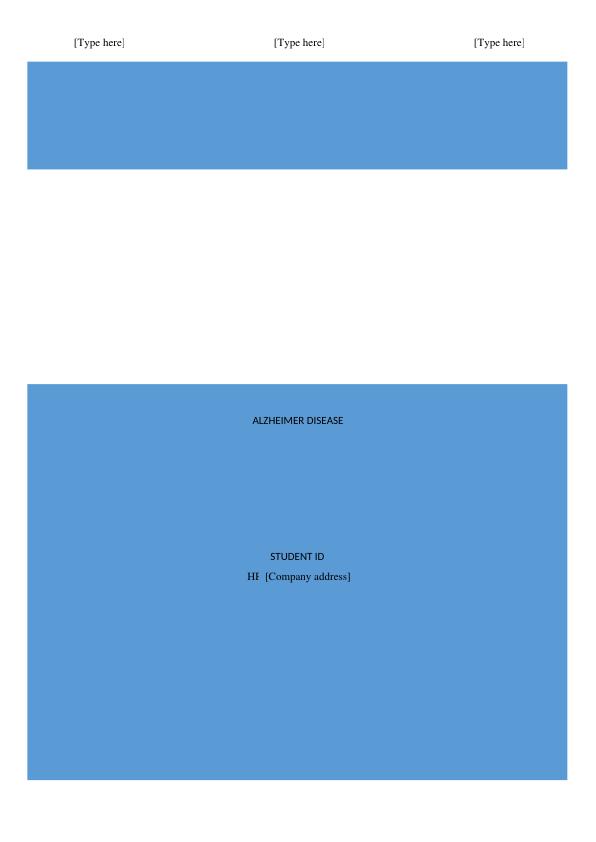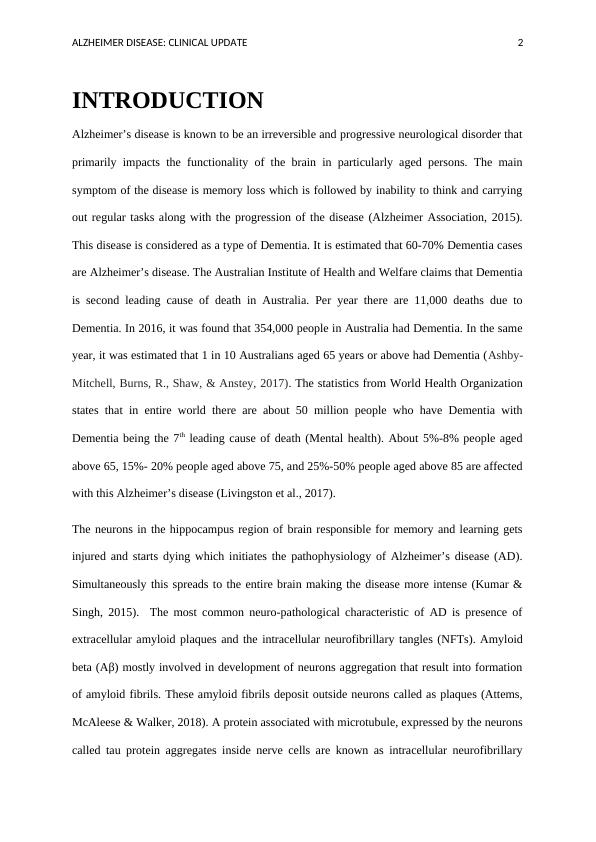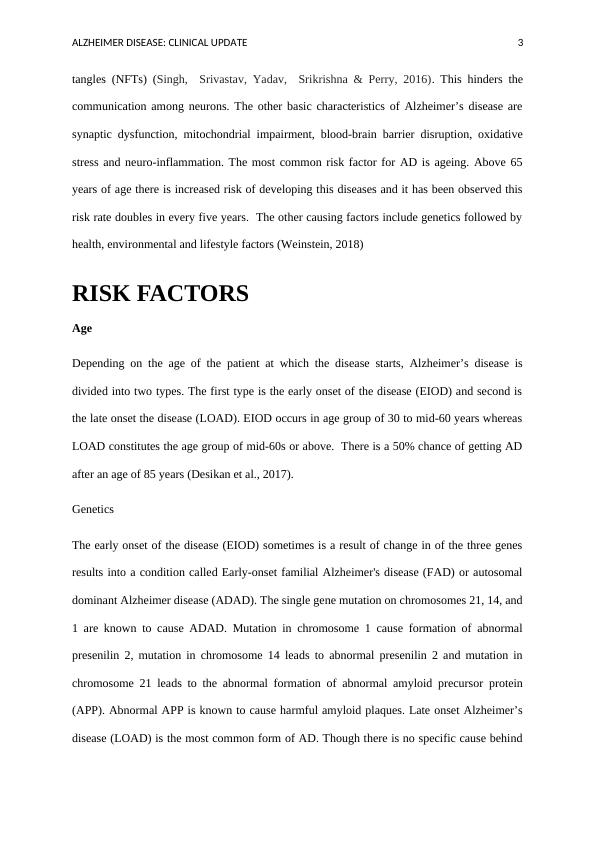Alzheimer Disease: Clinical Update
13 Pages3277 Words403 Views
Added on 2023-04-24
About This Document
This document provides a clinical update on Alzheimer Disease, including its risk factors, clinical manifestation, diagnostic procedures, and treatment options. It also includes statistics on the prevalence of the disease in Australia and worldwide. The document discusses the use of pharmacological and non-pharmacological treatments, such as psychotherapy and environmental modification, to manage the symptoms of Alzheimer Disease.
Alzheimer Disease: Clinical Update
Added on 2023-04-24
ShareRelated Documents
End of preview
Want to access all the pages? Upload your documents or become a member.
Study on Alzheimer’s Disease
|10
|3369
|272
Care for Older People - Case Study
|11
|3312
|26
Alzheimer Disease Project PDF
|14
|3441
|143
Critical Review on trial of Solanezumab in mild dementia due to Alzheimer’s disease
|10
|2649
|93
How does long term memory and short term memory differ in people with Alzheimer?
|8
|2228
|45
Pathophysiology associated with disorder symptoms: An Alzheimer's patient
|7
|1650
|281




